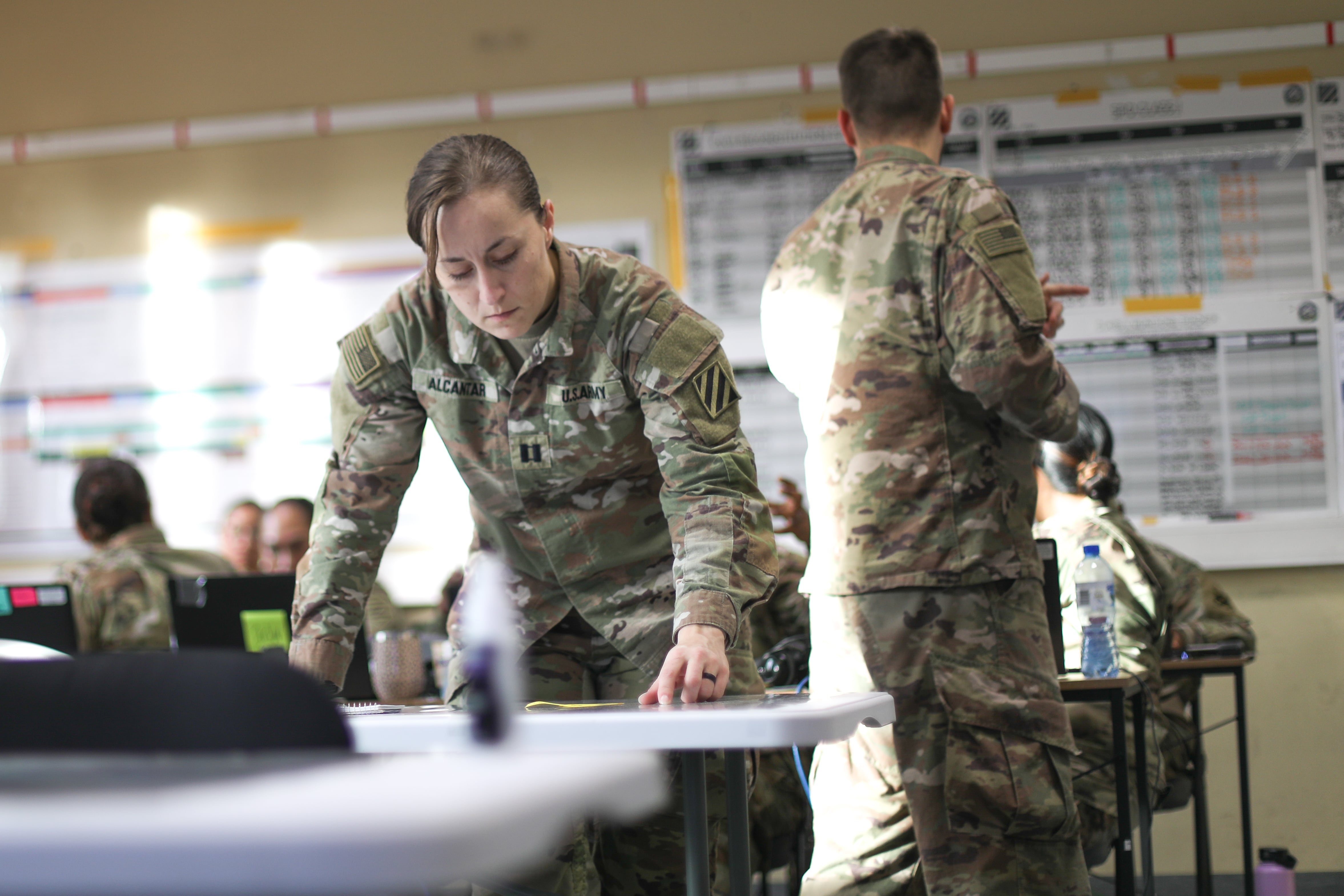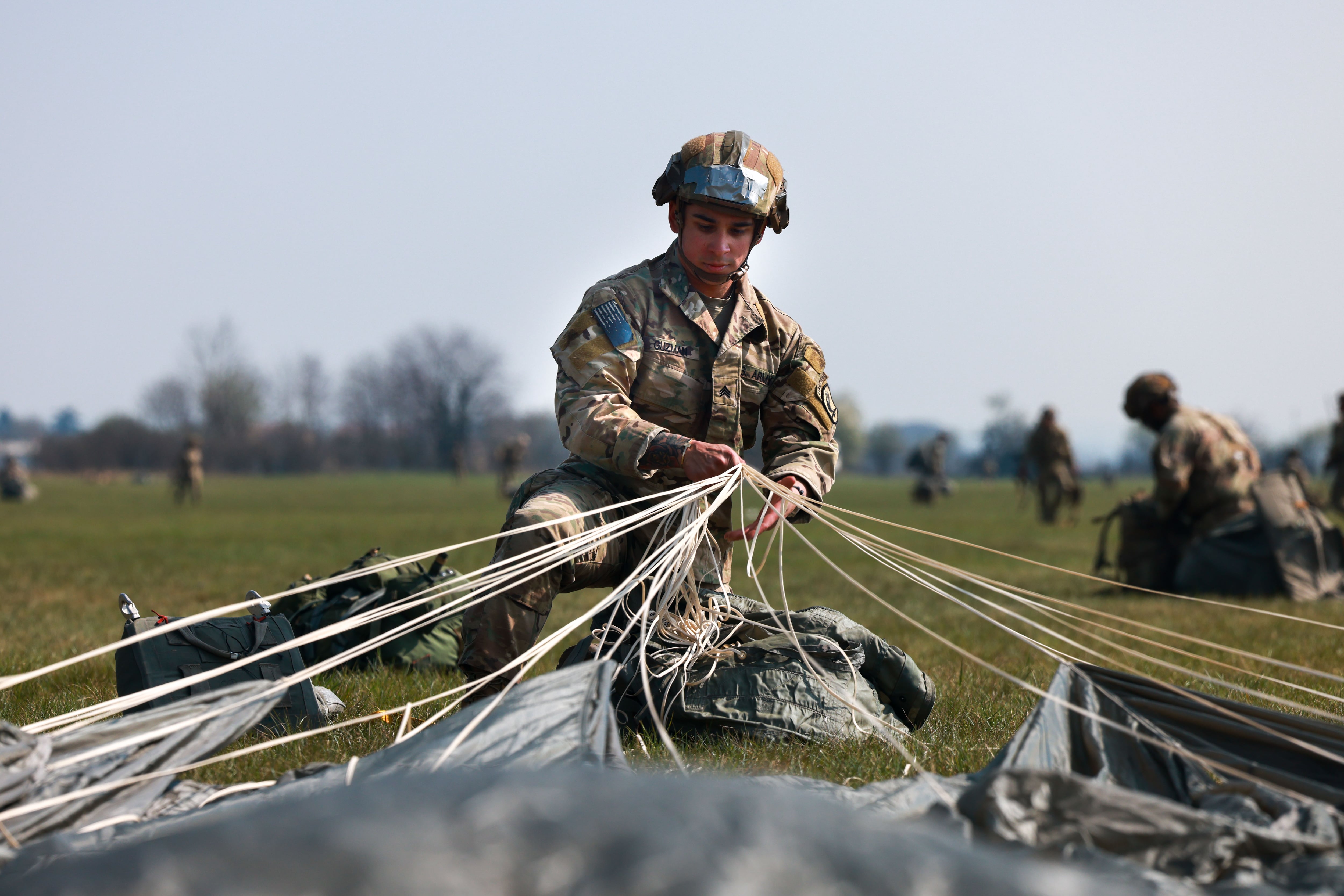The Army will recode nearly 20,000 paid parachutist positions in a major restructuring of its airborne forces aimed at improving readiness, service officials said.
The recoding means the positions will remain airborne billets, but soldiers will no longer be required to maintain jump status or receive jump pay.
Over a five-month period beginning last September, two dozen Army organizations met to examine the service’s requirements for airborne operations and training, Lt. Gen. Gregory Anderson, head of the 18th Airborne Corps, told Army Times.
RELATED

Since 2006, the Army has kept 56,756 paid parachutist positions on its rolls, Anderson said. For reference, the entire force of Army parachutists that jumped into Normandy during World War II was 13,000 troops.
In recent years, limited aircraft availability, especially C-17s and C-130s, has contributed to an overall “decline in collective airborne proficiency,” Anderson said.
As a result, assets used to maintain the jump status of the more than 56,000 positions has come at the expense of keeping the assault force — the combat troops in immediate response missions — at a high level of readiness, the three-star said.
“We started to assume risk with the high-end forces that have to be ready to go tonight,” Anderson said. “This is not about saving money; it’s about getting readiness to where we need it.”
Below are the parachutist position recodings by command; these figures are estimates by the U.S. Army and are not yet finalized:
- 9,000 – Army Special Operations Command
- 3,600 – Army National Guard
- 3,500 – Army Forces Command
- 1,900 – Army Reserve
- 1,000 – Army Pacific
- 850 – Army Europe and Africa
Currently, to maintain jump status, a parachutist must jump four times each year.
“What ends up happening we take fewer aircraft, same jump requirements and units doing everything they can to achieve basic airborne currency,” Anderson said. “In many cases, they were not meeting even currency.”
The Pentagon requires the Army to produce 15,000 parachutists at the ready at any time.
As the organizations analyzed this requirement, training needs and the demands of maintaining the force from riggers to jumpmasters, they had to ask tough questions, Anderson said.
“Are support battalions going to jump into a combat situation with the assault echelon?” Anderson said. “Or would they come in later some other way?”
Army Chief of Staff Gen. Randy George told Army Times in an email statement that the adjustments will prioritize training and resources where they are needed most.
“Too many positions were allocated outside the direct combat force. This was a drain on resources and we’re fixing it.”
Soldiers in the affected billets will still be airborne trained and if they transfer into an assault position, they will be retrained with a refresher course and put on paid jump status, Anderson said.
“These decisions help make our paratroopers more proficient by concentrating on those who could be jumping into combat,” George said.
Todd South has written about crime, courts, government and the military for multiple publications since 2004 and was named a 2014 Pulitzer finalist for a co-written project on witness intimidation. Todd is a Marine veteran of the Iraq War.





